With the anticipation of the recently announced Apple Vision Pro, developers and companies are eager to start building apps on visionOS. Thankfully, you can already explore the possibilities with Xcode 15 beta.
Learn more information and tutorials on visionOS
Getting Started
-
Download and install Xcode 15 (beta) at apple.com. Make sure visionOS is selected.
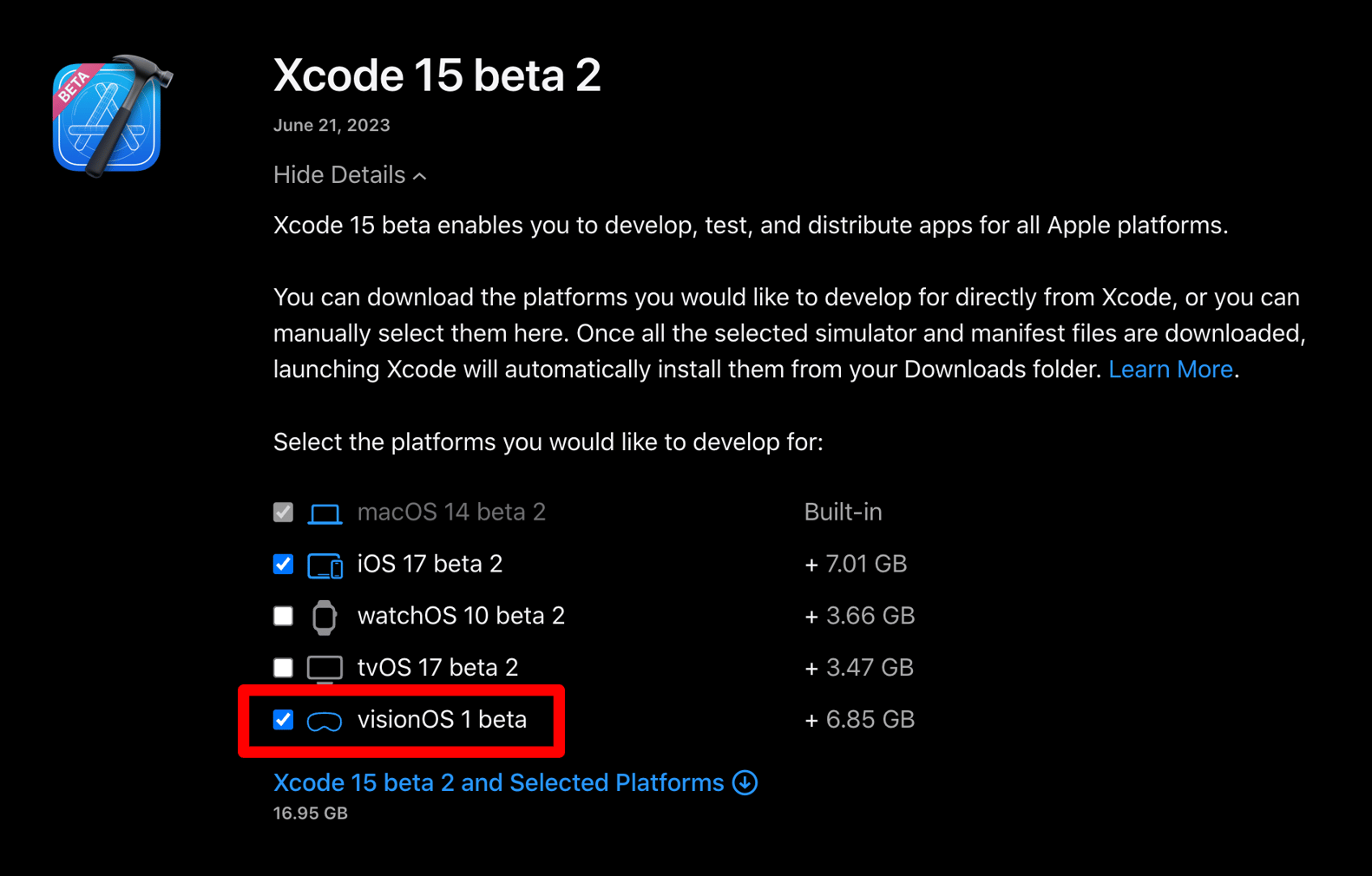
-
Create New Project > VisionOS > App

-
Initial Scene
-
Immersive Space
-
All set! You should be able to see the default preview:
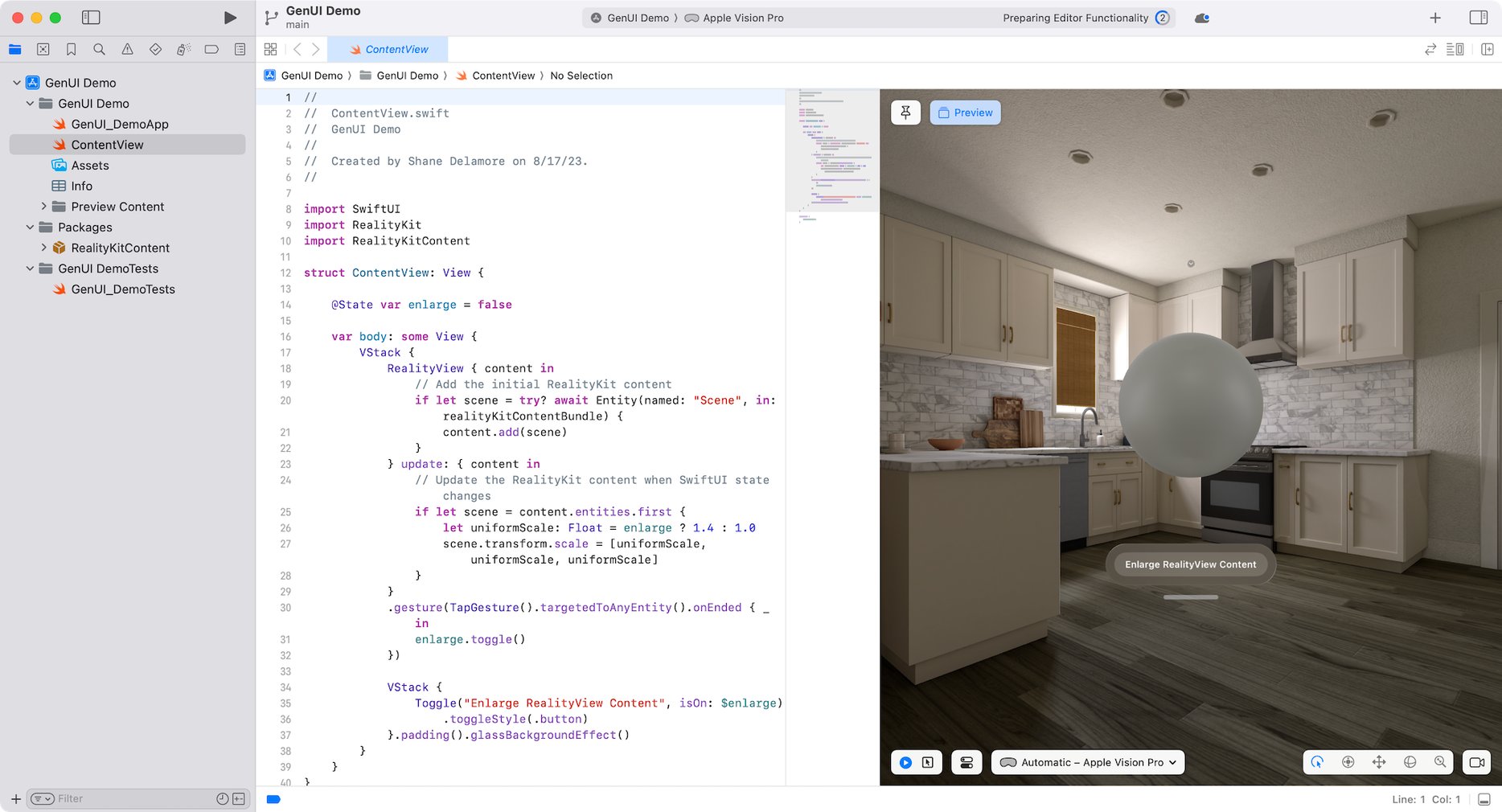
Navigating the Preview
First of all, why stay in the kitchen when we can sit on the couch? Let's move to the living room. There should be a "mountains" icon in the bottom-right of the preview. If not, you may need to make the preview window wider. Click the icon and select the "Living Room (Day)" scene.
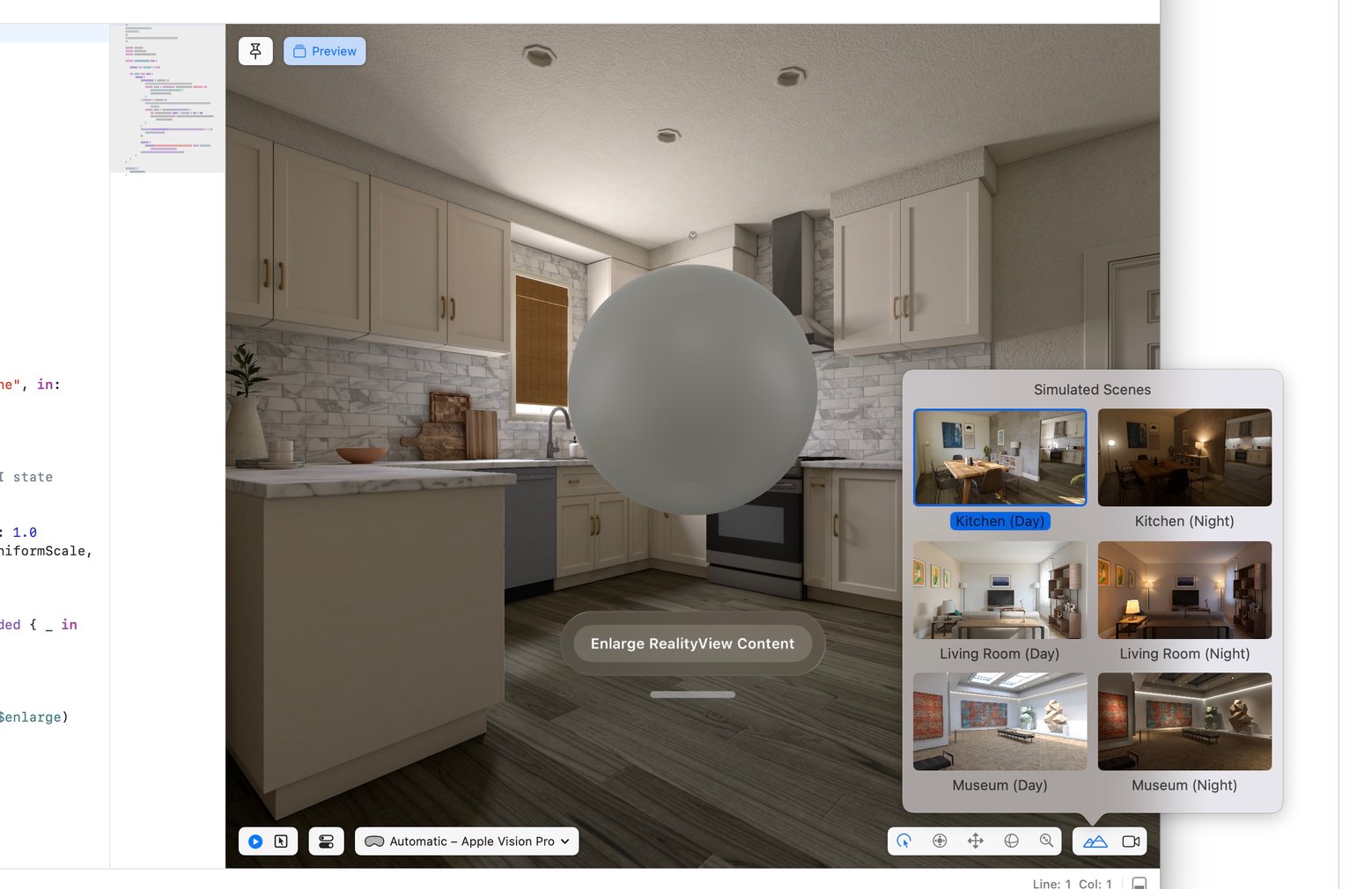
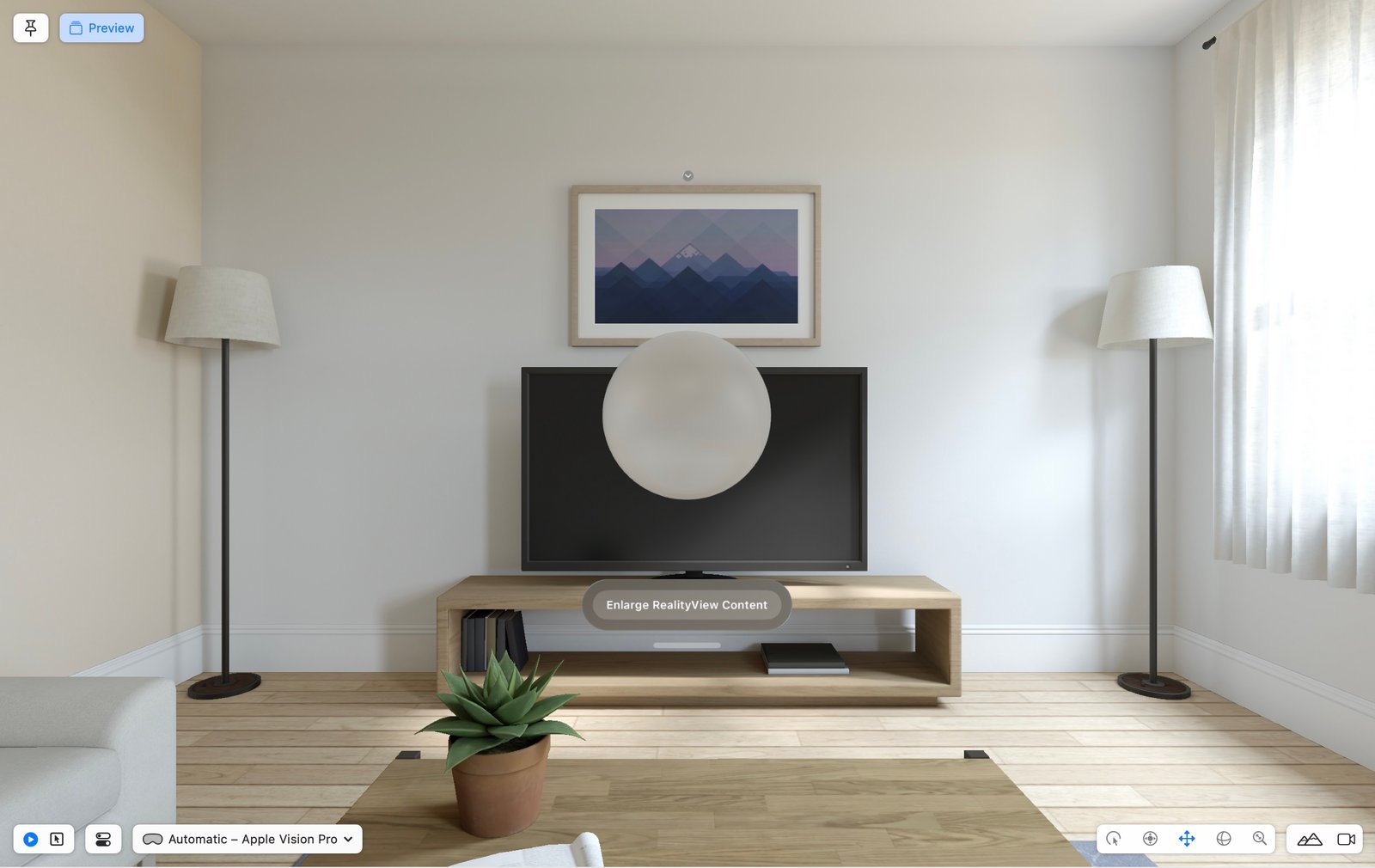
Much better!
Development
Now let's change the demo. First, we will explore how to add a "glass" panel with some content. Then, we will review how to load 3D models to the view.
- Open and edit: ContentView.swift
Let's start with the basics. In order to create the left panel, we add a VStack and style it using glassBackgroundEffect()
import SwiftUI
import RealityKit
import RealityKitContent
struct ContentView: View {
// ADD THIS LINE
@Environment(\.openURL) var openURL
@State var enlarge = false
var body: some View {
// REPLACE EVERYTHING IN THE VIEW WITH THIS
VStack(alignment: .leading) {
Text("GenUI").font(.largeTitle).padding(.bottom, 20)
Text("We build innovative software products that expedite technology roadmaps, and turn your potential into your reality.").padding(.bottom, 20)
Button("Learn more") {
openURL(URL(string: "https://www.genui.com/")!)
}
}
.padding(50)
.glassBackgroundEffect()
}
}
#Preview {
ContentView()
}
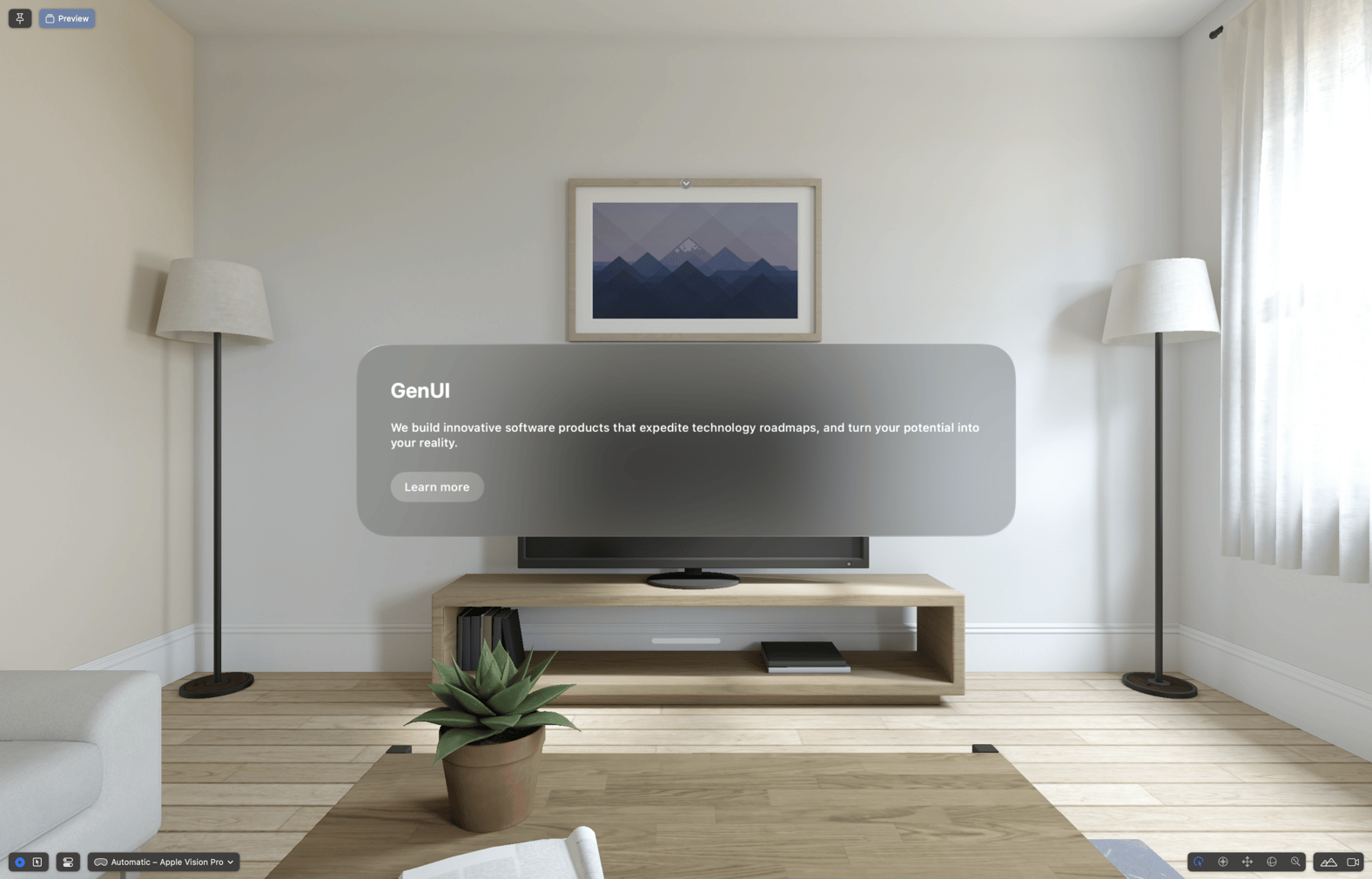
Now let's see how to load a 3D model. For that, we will be using RealityView. I also invite you to learn more about Model3D
import SwiftUI
import RealityKit
import RealityKitContent
struct ContentView: View {
@Environment(\.openURL) var openURL
@State var enlarge = false
var body: some View {
// WRAP CONTENT IN HStack
HStack {
VStack(alignment: .leading) {
Text("GenUI").font(.largeTitle).padding(.bottom, 20)
Text("We build innovative software products that expedite technology roadmaps, and turn your potential into your reality.").padding(.bottom, 20)
Button("Learn more") {
openURL(URL(string: "https://www.genui.com/")!)
}
}
.padding(50)
.glassBackgroundEffect()
// ADD RealityView
RealityView { content in
if let scene = try? await Entity(named: "Scene", in : realityKitContentBundle) {
content.add(scene)
}
}
}
}
}
#Preview {
ContentView()
}
After making the above change, you will probably recognize the sphere from the initial preview. That's because the model is in the default scene. To change that, we need to open Packages > RealityKitContent with the "Reality Composer Pro" developer tool (Xcode > Open Developer Tools > Reality Composer Pro).
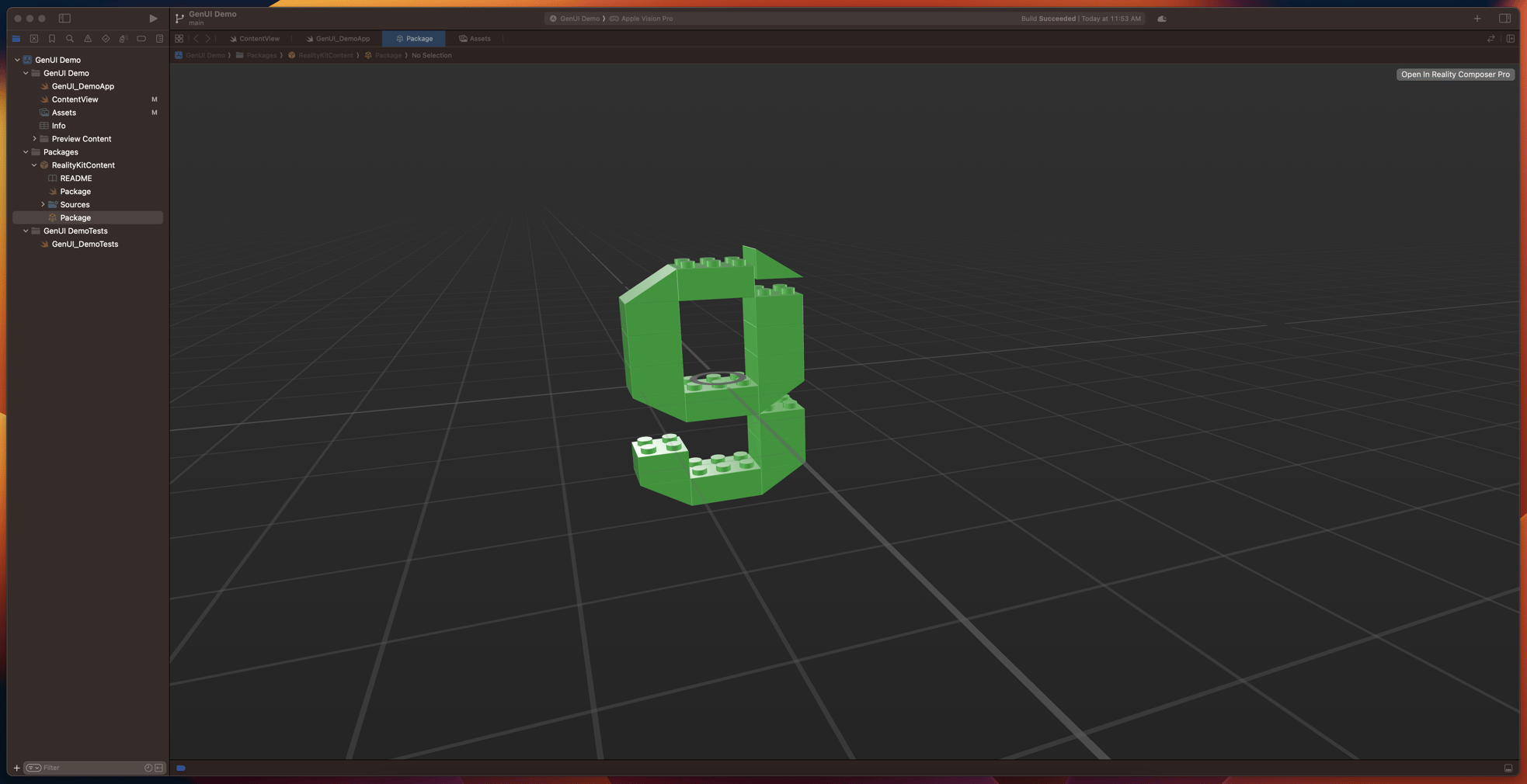
From there, you can import your own .usdz files or download one from the library. Once the file has been added, you can drag it to your scene.
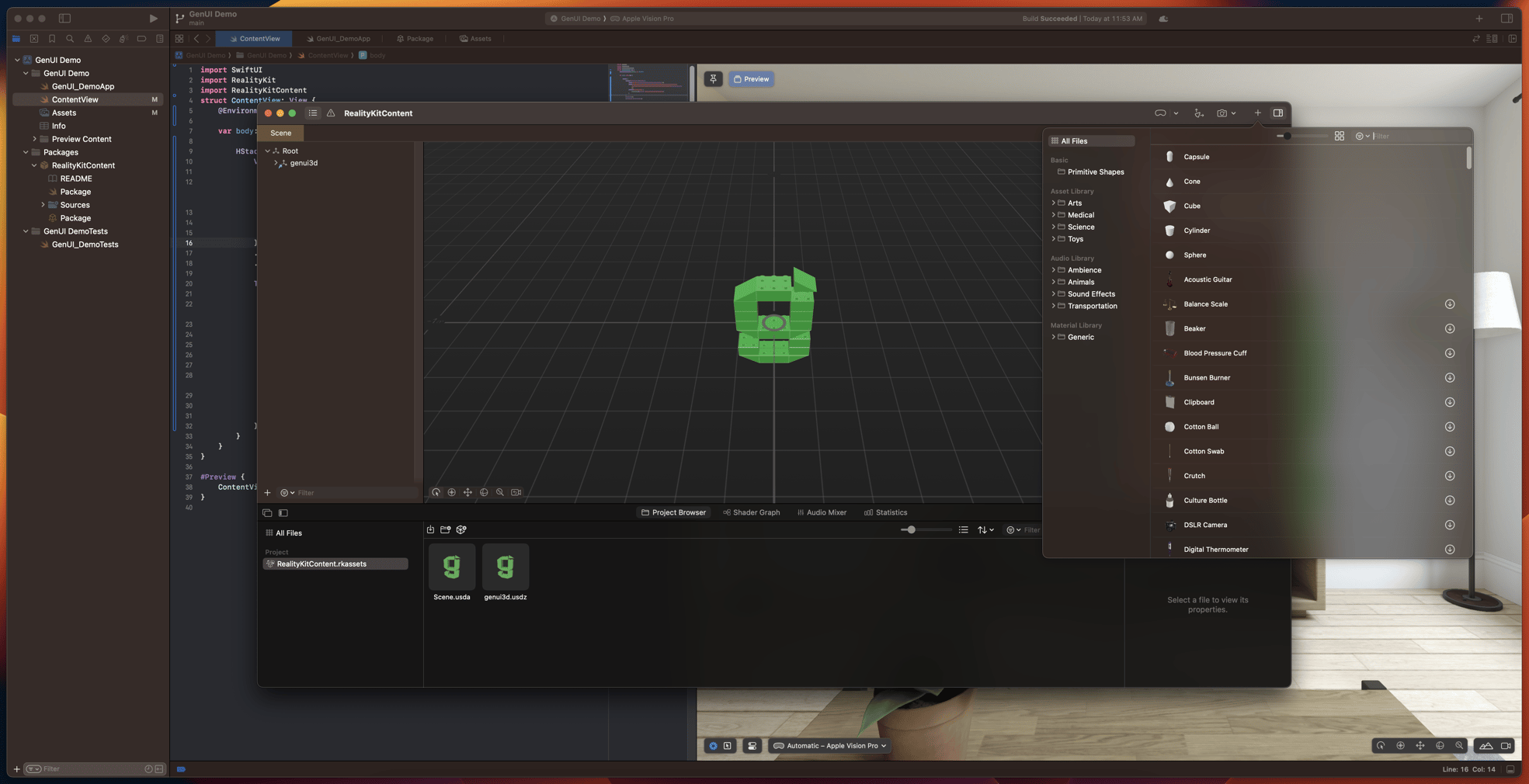
Finally, let's add some movement. To create the rotation, you can wrap the RealityView in a TimelineView and apply a rotation3DEffect
import SwiftUI
import RealityKit
import RealityKitContent
struct ContentView: View {
@Environment(\.openURL) var openURL
@State var enlarge = false
var body: some View {
HStack {
VStack(alignment: .leading) {
Text("GenUI").font(.largeTitle).padding(.bottom, 20)
Text("We build innovative software products that expedite technology roadmaps, and turn your potential into your reality.").padding(.bottom, 20)
Button("Learn more") {
openURL(URL(string: "https://www.genui.com/")!)
}
}
.padding(50)
.glassBackgroundEffect()
// WRAP RealityView WITH A TimelineView AND ADD A .rotation3DEffect
TimelineView(.animation) { context in
RealityView { content in
if let logo = try? await Entity(named: "Scene", in : realityKitContentBundle) {
content.add(logo)
}
}
.rotation3DEffect(
Rotation3D(
angle: Angle2D(degrees: 5 * context.date.timeIntervalSinceReferenceDate),
axis: .y
)
)
}
}
}
}
#Preview {
ContentView()
}
And voila!
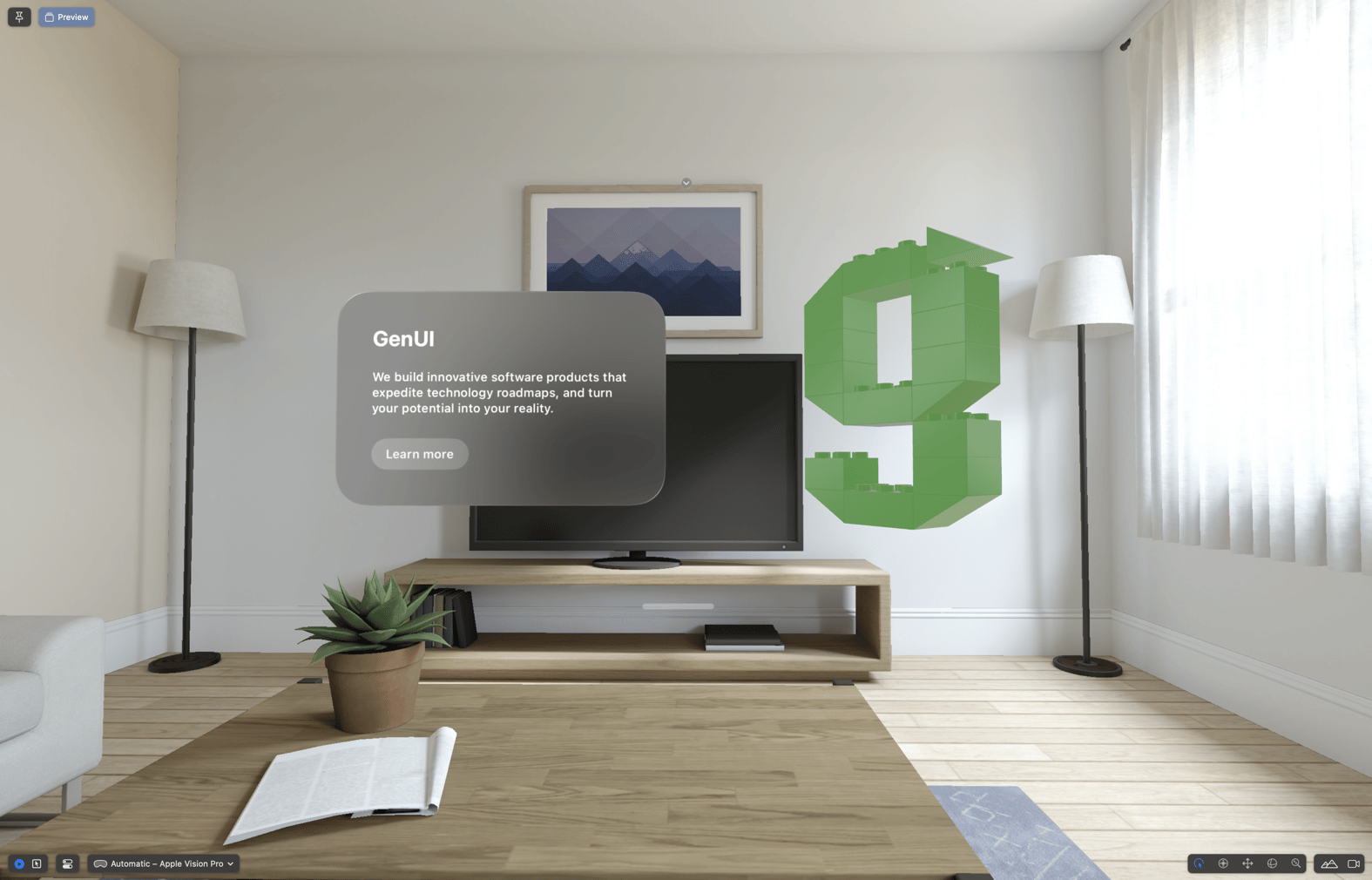
Below is a video of it in action.
Conclusion
In this article we showed how to place some basic elements such as display-text, buttons, glass-backgrounds and 3D models as well as some basic layout options for visionOS. This is just the tip of the ice-berg, but we hope it is helpful getting you started developing your own apps for the VisionPro.
Can we help you apply these ideas on your project? Send us a message! You'll get
to talk with our awesome delivery team on your very first call.